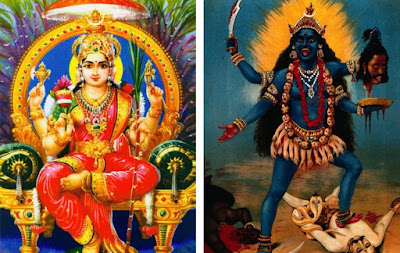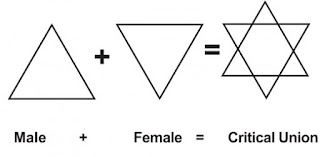What is natural intercourse?
What is super-natural intercourse?
What is non-natural intercourse?
Natural intercourse ( penile-vaginal intercourse ) has social approval in every society because it is reproductive.
Super natural intercourse happens between divine beings which results in the child with divine powers or super natural powers. This is also accepted most of the time because of the fear of religious myths and is considered as reproductive.
What about non-natural sex?
Is it never accepted in society?
Is there any culture/society which accepts it?
Does the culture accepting it impose some kind of restrictions?
Can it be reproductive?
If it is reproductive, what will be the reproduction?
In christian mythology, every kind of sex apart from penile-vaginal sex ( Missionary position ) is considered a sin. Masturbation, female-female intercourse and male-male intercourse of any kind are labelled as sodomy ( non-vaginal sex ).
In Hindu texts, every type of intercourse is accepted and can be reproductive. male-male reproduction is always motivated by a woman. It is the woman who is involved as the inspiration of desire who causes the ejaculation- the rishis see beautiful woman and in that unbalanced state of mind they ejaculate, lord Shiva sees Mohini and ejaculates to produce Harihara. But when a goddess produce anonymously, she does so without involvement of a male, like Parvati produces Ganesha from her body rubbings ( so he is known as Vinayak or Vina nayak i.e. one who is born without nayak or male). Males have outward inclination of their fluid while female have inward of that. Males can not reverse the direction of inclination but females can.
Following story describes the reproductive non-natural intercourse:
Bhagirath is a prominent figure amongst Hindus. He brought the Ganga down to the earth from heaven which three generations of his ancestory tried but could not succeed. Ganga is also named as Bhagirathi in the honour of him. Even a herculean task is idiomatically expressed as Bhagrirath Prayatna.
King Dilip of Ayodhya had two wives, Chandra and Mala but no children. He died childless. Then the sun lineage of kings would not have their heir and after few generations lord Vishnu had to incarnate in this royal family as lord Ram. After his death, his wives got worried because there was no heir to the royal lineage. They went to the family rishi Vashistha and request them to help them continue the family line. Vashistha gave them blessings that a son would be born to them. He then performed Putreshthi sacrifice (पुत्रेष्ठि यज्ञ ) which is perfomed to get blessed with a son (पुत्र ). He then prepared a potion as the prasad of the ritual. He then gave this potion to Mala to drink and advised Chandra to approach Mala and have sexual intercourse with her with the bhava of a man (पुरुष भावेन मैथुनाय ). The word 'bhava' means emotion, intention or purpose in indian languages. Bhava is alwyas outward inclined i.e. 'bhava' is alwyas shown. This term suggests performing through outward action or desire. During intercourse man is outward inclined. This is he who is directed towards the woman. This outward inclination representing male can also be found in his reproductive organ which is always directed outwards. While the female inclination is inward also represented by her reproductive oragan which never shows the intention or desire. Female represents inward inclination or she is always observation while male represents outward inclination or he is always observer. Only observer can show the 'bhava' of observing ( during intercourse by transformation from non arousal state to the aroused one ).In the story, Chandra showed the bhava and was directed towards a woman and was attributed as a man.
As instructed by rishi Vashistha, Chandra approached Mala and they made love to each other. Mala got pregnant. Now the child born was without bones. He was named Bhagirath because he was born by the union of two bhagas or vulvas.
Now the idea of two mothers or द्विमातृ comes from the story of Bhagriath's birth. In a culture where homosexuality is restricted or queer ideas are abandoned, the possible way of reproduction is 'Penetration'. Penetration is the most natural way of reproduction as well as of sexual pleasure. Penetration is possible only between the opposite sex which often sounds as natural sex. What happens when two woman satisfies one another physically? Friction? It can be a mode for sexual pleasure but can friction be reproductive? The answer lies in the Hindu medical text 'Sushruta Samhita' (सुश्रुत संहिता ).
All the soft part or tissues of the body come from the mother and the tough parts come from the father. The mother contributes the child's skin, flesh, blood, fat and all the fleshy organs such as heart, liver, kidneys , intenstines etc. The father contributes the child's hair, nails, teeth, bones, veins, semens etc.
 According to Charak Samhita, when the maternal element is stronger, the child conceived is female and when the paternal element is stronger, the child conceived is male. When both maternal and paternal elements are equally strong, the child conceived as of no sex which is considered as Tritiya Prakriti (तृतीय प्रकृति ) in ancient indian text like kamasutra.
According to Charak Samhita, when the maternal element is stronger, the child conceived is female and when the paternal element is stronger, the child conceived is male. When both maternal and paternal elements are equally strong, the child conceived as of no sex which is considered as Tritiya Prakriti (तृतीय प्रकृति ) in ancient indian text like kamasutra.But what happens when two female energies get united. The conceived child would not have the firm parts of the body which were supposed to be given by paternal element. So, the friction could result in reproduction.
Agni, the fire-god' is also called the child of two mothers as the fire sticks are rubbed to create fire. It is friction not penetration that creates Agni.
Bhagriath being boneless was ugly and just a lump of flesh. One day he encountered a deformed rishi Ashtvakra(अष्टवक्र ) whose name literally means 'bent in eight places'. When Bhagrirath greeted him, the rishi suspected Bhagirath of mimicking his crippled condition. The enraged rishi declared that if the boy was mocking him, he would be burnt to ashes but if he was naturally crippled, he would immediately attain the beauty and bones. As a result, Bhagriath's body was transformed into a young man who was as beautiful as Kama, God of love.
This story of Bhagirath comes from the Hindu epic Ramayana. As the Ramayana deals with the kings of Surya dynasty ( sun lineage ), Bhagirath was also a Surya Vanshi who were famous for their honesty, obligations and simplicity. King Sagar, an ancestor to Lord Ram,was the ruler of Ayodhya. He defeated many demons in war made the Ayodhya a peaceful place. Then the king decided to organize 'Ashwamedha Yagya'.
During that period, Ashwamedha Yagya was conducted to declare the supermacy of the king. In this Yagya, a horse is set free and where ever the horse goes, the earth is declared as the property of the king. Whosoever stops the horse has to battle with the king. Lord Ram had also conducted this Ashwamedh Yagya where he had to fight with his own children Luv and Kush. Arjun, a Chandravanshi King from the epic Mahabharata, also conducted this yagya after the war of kurukshetra. So, this yagya used to be conducted to establish the supremacy of the king and to make him a Chakravarti Samrat.
King Sagar had 60,000 sons. King Sagar sent his horse across the earth accompanied by his sons. King Sagar had successfully completed the Ashwamedha Yagya 99 times. Each time he had sent his horse across the earth, it had come unchallenged. This was the 100th time. Now Indra, king of Swarga, feared of the supremacy of the king Sagar. To stop his supremacy, Indra stole the horse and tied it to the Ashram of Sage kapil who was in meditation. When the sons of king Sagar saw the horse tied to the ashram of Sage Kapil, they thought sage Kapil had stolen the cow. They got furious and started to attack the ashram of Kapil. On hearing the disturbances, Kapil opened his eyes and got enraged. He burnt the 60,000 sons of Sagar into ashes. Then Anshuman, grandson of king Sagar, brought the horse back to Ayodhya and begged for the lives of his father and uncles. Sage Kapil told him that his father and uncles can be brought back to their lives only if river goddess Ganga is brought down to earth from heaven. He advised them that the water of river goddess Ganga would miraculously bring back the his ancestors to life.
Anshumna did great penance to bring the Ganga down to the earth but could not succeed. His son king Dilip also tried hard but failed in doing so.
Then Bhagirath, Dilip's son, decided to bring the Ganga down to the earth and get his ancestors liberated from the curse of Sage Kapil. He left his kingdom and started meditation of the Brahman. Bhagirath did a penance for a thousand years and requested Brahma to send the Ganga down to the earth and wash down the ashes of his ancestors for their salvation. Brahma got pleased with the penance of Bhagirath and granted him the boon of his wish. But Brahma asked Bhagirath to plead Lord Shiva as the earth could not bear the flow of river Ganga falling from Swarga. Bhagirath then worshipped lord shiva and shiva blessed him and released Ganga through his hair locks into seven streams to the earth. The water of Ganga washed the ashes of bhagirath's ancestors and liberated them to the heaven. As the Ganga was held by shiva on his head , Shiva is also known as GangaDhar ( one who holds Ganga on his head ).
The story of bhagirath's birth by two vulvas appears only in bengali text. This story was first found in Kritivassa Ramayana in Bengali. Kritivassa also describes the sexual pleasure of the queens:
Two queens enjoyed the company of each other. They lived together in extreme love. Both of them knew one others intention and enjoyed love play.When they conceived a child, they named it Bhagirath, born of the mutual enjoyment of two bhagas or vulvas ( Bhage Bhage Sambhog ).
In female-female sex, the reproductive fluids of both women unite in the womb of one of them which can result in reproduction without paternal fluid. According to Charak Samhita, a child can not be born without maternal element as it would be a mere skeleton. but it can be born without paternal element. According to Sushruta Samhita, if a woman dreams of sexual intercourse without involving a man can conceive and give birth to a jelly-like mass. A non-vaginal sex or ayoni sex is considered to be monstrous and is never reproductive because their is no yoni to conceive the child.
Now the Bhagirath's birth is not a ayoni sex (non-vaginal sex); it is double yoni one(bhage-bhage). What kind of birth is it?
non-natural or super-natural?



























